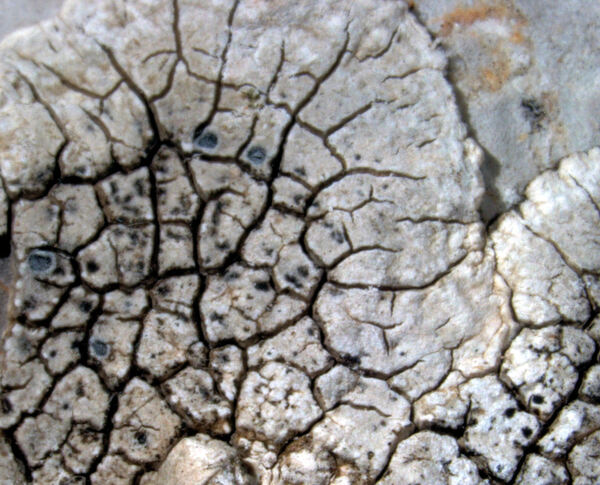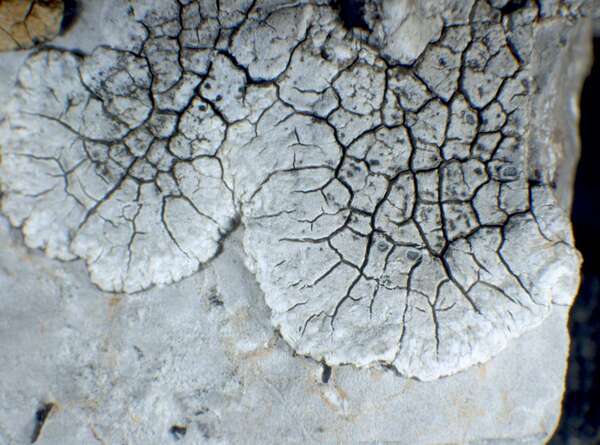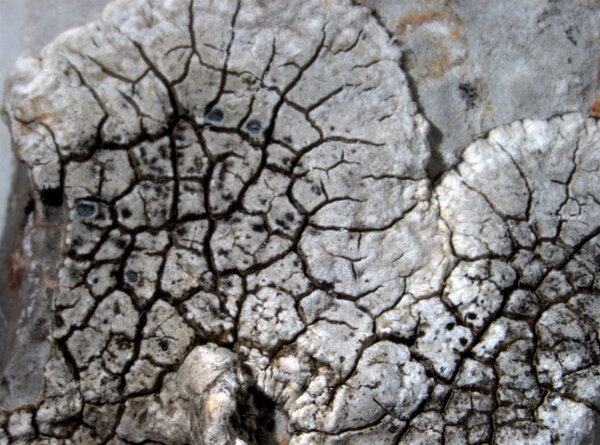Lobothallia cheresina (Müll. Arg.) A. Nordin, Cl. Roux & Sohrabi var. cheresina
in Roux, Bull. Soc. linn. Provence, num. spéc. 16: 216, 2012. Basionym: Lecanora cheresina Müll. Arg. - Rev. Mycol., 2: 75, 1880.
Synonyms: Aspicilia cheresina (Müll. Arg.) Hue; Aspicilia cheresina var. granuligera (J. Steiner) Szatala?
Distribution: N - Lig (Giordani & al. 2016). C - Umb (Nimis & Tretiach 1999, Ravera & al. 2006), Abr (Recchia & Villa 1996), Mol (Nimis & Tretiach 1999, Caporale & al. 2008, Ravera & al. 2009, Genovesi & Ravera 2014), Sar. S - Camp (Aprile & al. 2003, 2003b, Nimis & Tretiach 2004, Garofalo & al. 2010), Cal (Puntillo 1996), Si (Nimis & al. 1994, 1996b, Caniglia & Grillo 2001, 2005, 2006, Grillo & Caniglia 2004, Cataldo & Cannavò 2014).
Description: Thallus crustose, episubstratic, white to pale grey, continuous to rimose in peripheral parts, areolate in central parts, very well delimited (sometimes by a black prothallus), forming orbicular patches on the thalli of Circinaria calcarea; the marginal part of the thallus is often radially cracked, giving it an almost placodioid appearance, the central areoles are angular, flat and smooth. Apothecia lecanorine-aspicilioid, 0.2-1 mm across, irregular in outline, from round to elongate or angular, immersed in the areoles, with a black, often grey-pruinose, concave to flat, smooth disc and a very slightly raised thalline margin. Epithecium greenish brown; hymenium colourless; paraphyses more or less branched and anastomosing; hypothecium colourless, subtended by a continuous algal layer. Asci (6-)8-spored, clavate, the thin outer coat K/I+ blue, the wall and apical dome K/I-. Ascospores 1-celled, hyaline, broadly ellipsoid, 8-14(-16) x 5-10 μm, 1-2-seriate in the asci. Pycnidia immersed, black, the wall colourless in sections except around the ostiole. Conidia bacilliform, 4-5 x c. 1 μm. Photobiont chlorococcoid. Spot tests: thallus K-, C-, KC-, P-, UV-. Chemistry: without lichen substances.Note: a southern European and Mediterranean-montane, very characteristic but often overlooked species described from Egypt; it is found on calcareous rocks, starting the life-cycle on Circinaria calcarea and related species. It is not rare in Italy, especially in the Apennines and on the main Islands, and should be looked for further in Northern Italy. The species is chemically variable, which led to the description of several varieties whose taxonomic value should be re-assesed on the basis of molecular data.
Growth form: Crustose placodiomorph
Substrata: rocks
Photobiont: green algae other than Trentepohlia
Reproductive strategy: mainly sexual
paras Circinaria calcarea s.lat.
Commonnes-rarity: (info)
Alpine belt: absent
Subalpine belt: absent
Oromediterranean belt: rather common
Montane belt: rather rare
Submediterranean belt: very rare
Padanian area: absent
Humid submediterranean belt: rare
Humid mediterranean belt: absent
Dry mediterranean belt: absent
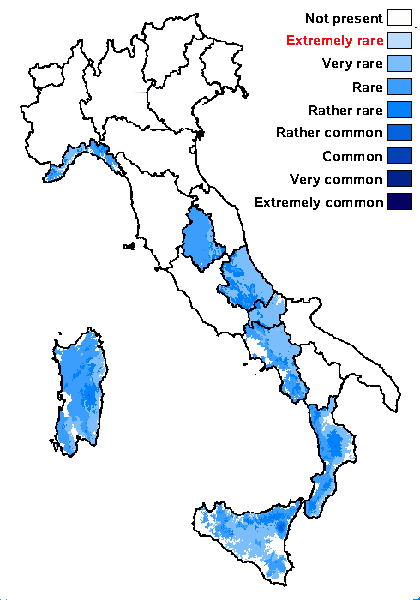
Predictive model
Herbarium samples
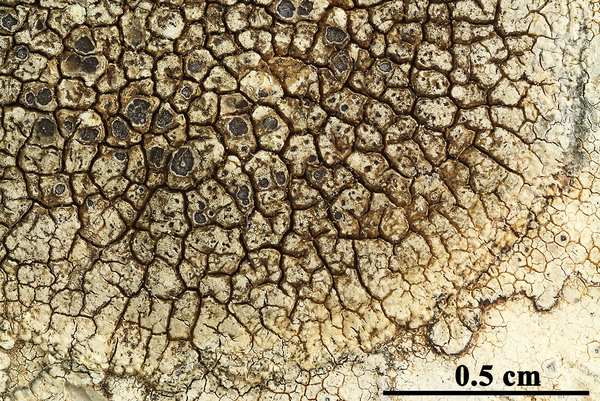

Felix Schumm; Owner: CC BY-SA 4.0
[TSB 32024], Italia, Campania, Prov. Caserta, Lago del Matese 3 km before Passo di Miralago, on limestone, growing on A. calcarea - c. 1020 m. Leg. P.L. Nimis & M. Tretiach, 15.04.2000
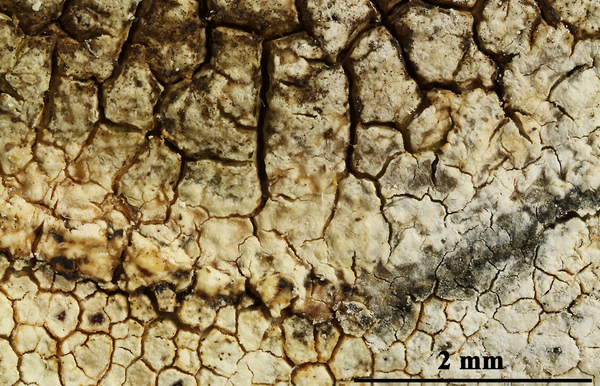

Felix Schumm; Owner: CC BY-SA 4.0
[TSB 32024], Italia, Campania, Prov. Caserta, Lago del Matese 3 km before Passo di Miralago, on limestone, growing on A. calcarea - c. 1020 m. Leg. P.L. Nimis & M. Tretiach, 15.04.2000
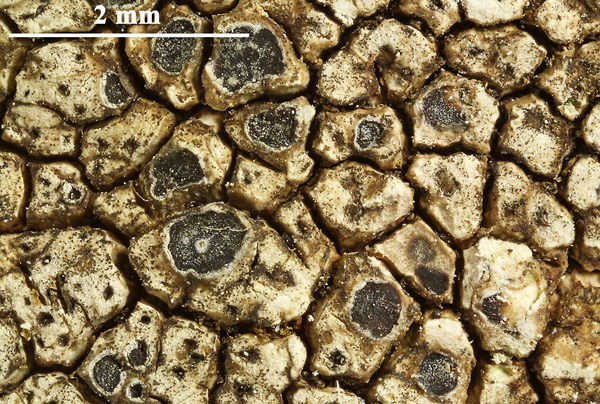

Felix Schumm; Owner: CC BY-SA 4.0
[TSB 32024], Italia, Campania, Prov. Caserta, Lago del Matese 3 km before Passo di Miralago, on limestone, growing on A. calcarea - c. 1020 m. Leg. P.L. Nimis & M. Tretiach, 15.04.2000
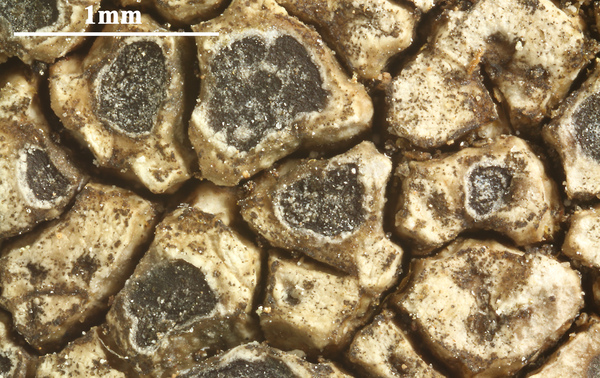

Felix Schumm; Owner: CC BY-SA 4.0
[TSB 32024], Italia, Campania, Prov. Caserta, Lago del Matese 3 km before Passo di Miralago, on limestone, growing on A. calcarea - c. 1020 m. Leg. P.L. Nimis & M. Tretiach, 15.04.2000
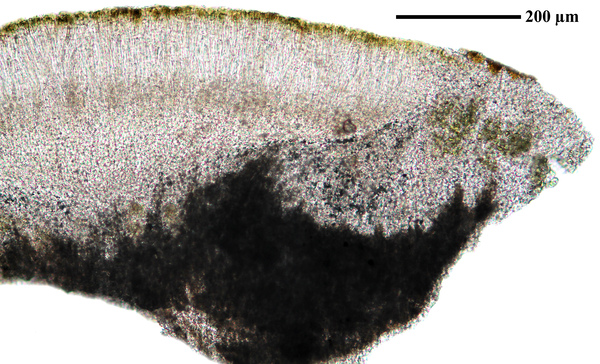

Felix Schumm - CC BY-SA 4.0
[TSB 32024], Italia, Campania, Prov. Caserta, Lago del Matese 3 km before Passo di Miralago, on limestone, growing on A. calcarea - c. 1020 m. Leg. P.L. Nimis & M. Tretiach, 15.04.2000
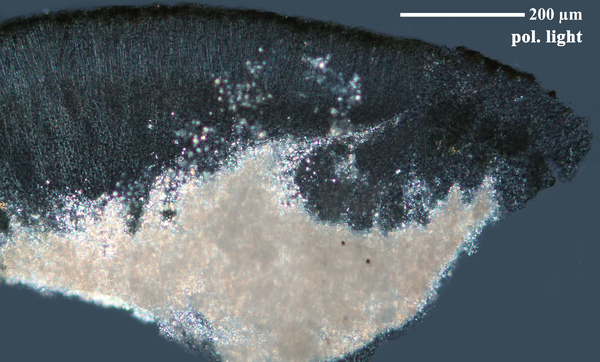

Felix Schumm - CC BY-SA 4.0
[TSB 32024], Italia, Campania, Prov. Caserta, Lago del Matese 3 km before Passo di Miralago, on limestone, growing on A. calcarea - c. 1020 m. Leg. P.L. Nimis & M. Tretiach, 15.04.2000
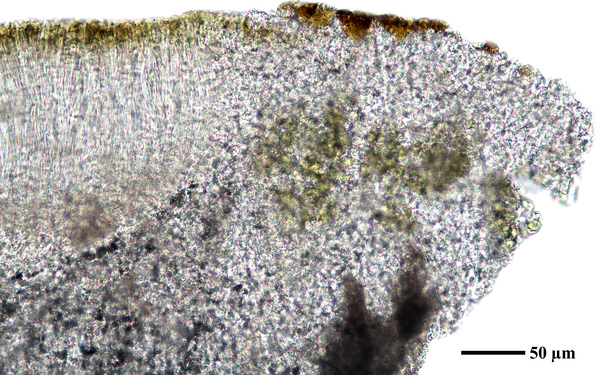

Felix Schumm - CC BY-SA 4.0
[TSB 32024], Italia, Campania, Prov. Caserta, Lago del Matese 3 km before Passo di Miralago, on limestone, growing on A. calcarea - c. 1020 m. Leg. P.L. Nimis & M. Tretiach, 15.04.2000


Felix Schumm - CC BY-SA 4.0
[TSB 32024], Italia, Campania, Prov. Caserta, Lago del Matese 3 km before Passo di Miralago, on limestone, growing on A. calcarea - c. 1020 m. Leg. P.L. Nimis & M. Tretiach, 15.04.2000
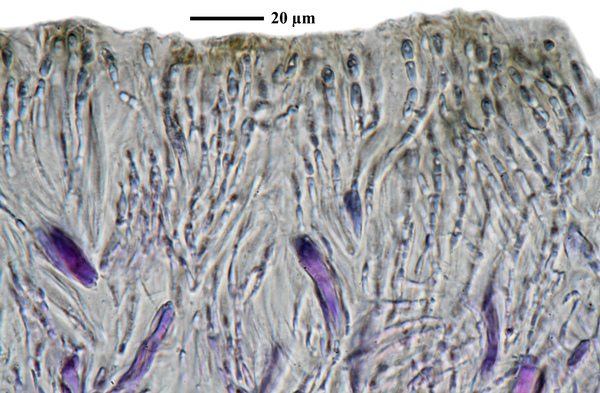

Felix Schumm - CC BY-SA 4.0
[TSB 32024], Italia, Campania, Prov. Caserta, Lago del Matese 3 km before Passo di Miralago, on limestone, growing on A. calcarea - c. 1020 m. Leg. P.L. Nimis & M. Tretiach, 15.04.2000
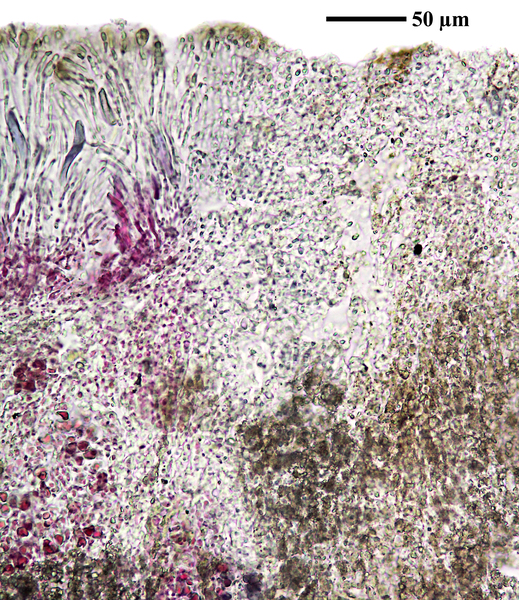

Felix Schumm - CC BY-SA 4.0
[TSB 32024], Italia, Campania, Prov. Caserta, Lago del Matese 3 km before Passo di Miralago, on limestone, growing on A. calcarea - c. 1020 m. Leg. P.L. Nimis & M. Tretiach, 15.04.2000


Felix Schumm - CC BY-SA 4.0
[TSB 32024], Italia, Campania, Prov. Caserta, Lago del Matese 3 km before Passo di Miralago, on limestone, growing on A. calcarea - c. 1020 m. Leg. P.L. Nimis & M. Tretiach, 15.04.2000
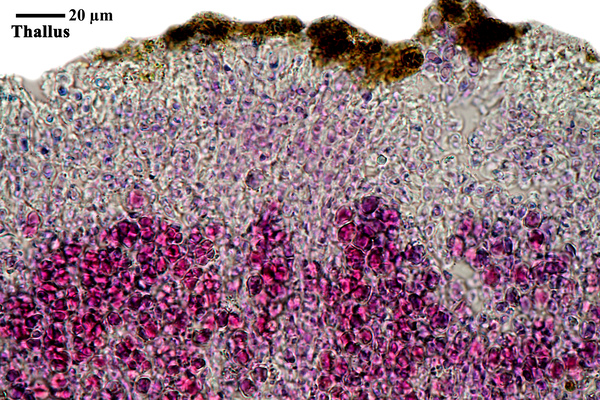

Felix Schumm - CC BY-SA 4.0
[TSB 32024], Italia, Campania, Prov. Caserta, Lago del Matese 3 km before Passo di Miralago, on limestone, growing on A. calcarea - c. 1020 m. Leg. P.L. Nimis & M. Tretiach, 15.04.2000
Growth form: Crustose placodiomorph
Substrata: rocks
Photobiont: green algae other than Trentepohlia
Reproductive strategy: mainly sexual
paras Circinaria calcarea s.lat.
Commonnes-rarity: (info)
Alpine belt: absent
Subalpine belt: absent
Oromediterranean belt: rather common
Montane belt: rather rare
Submediterranean belt: very rare
Padanian area: absent
Humid submediterranean belt: rare
Humid mediterranean belt: absent
Dry mediterranean belt: absent

Predictive model
| Herbarium samples |


Felix Schumm; Owner: CC BY-SA 4.0
[TSB 32024], Italia, Campania, Prov. Caserta, Lago del Matese 3 km before Passo di Miralago, on limestone, growing on A. calcarea - c. 1020 m. Leg. P.L. Nimis & M. Tretiach, 15.04.2000


Felix Schumm; Owner: CC BY-SA 4.0
[TSB 32024], Italia, Campania, Prov. Caserta, Lago del Matese 3 km before Passo di Miralago, on limestone, growing on A. calcarea - c. 1020 m. Leg. P.L. Nimis & M. Tretiach, 15.04.2000


Felix Schumm; Owner: CC BY-SA 4.0
[TSB 32024], Italia, Campania, Prov. Caserta, Lago del Matese 3 km before Passo di Miralago, on limestone, growing on A. calcarea - c. 1020 m. Leg. P.L. Nimis & M. Tretiach, 15.04.2000


Felix Schumm; Owner: CC BY-SA 4.0
[TSB 32024], Italia, Campania, Prov. Caserta, Lago del Matese 3 km before Passo di Miralago, on limestone, growing on A. calcarea - c. 1020 m. Leg. P.L. Nimis & M. Tretiach, 15.04.2000


Felix Schumm - CC BY-SA 4.0
[TSB 32024], Italia, Campania, Prov. Caserta, Lago del Matese 3 km before Passo di Miralago, on limestone, growing on A. calcarea - c. 1020 m. Leg. P.L. Nimis & M. Tretiach, 15.04.2000


Felix Schumm - CC BY-SA 4.0
[TSB 32024], Italia, Campania, Prov. Caserta, Lago del Matese 3 km before Passo di Miralago, on limestone, growing on A. calcarea - c. 1020 m. Leg. P.L. Nimis & M. Tretiach, 15.04.2000


Felix Schumm - CC BY-SA 4.0
[TSB 32024], Italia, Campania, Prov. Caserta, Lago del Matese 3 km before Passo di Miralago, on limestone, growing on A. calcarea - c. 1020 m. Leg. P.L. Nimis & M. Tretiach, 15.04.2000


Felix Schumm - CC BY-SA 4.0
[TSB 32024], Italia, Campania, Prov. Caserta, Lago del Matese 3 km before Passo di Miralago, on limestone, growing on A. calcarea - c. 1020 m. Leg. P.L. Nimis & M. Tretiach, 15.04.2000


Felix Schumm - CC BY-SA 4.0
[TSB 32024], Italia, Campania, Prov. Caserta, Lago del Matese 3 km before Passo di Miralago, on limestone, growing on A. calcarea - c. 1020 m. Leg. P.L. Nimis & M. Tretiach, 15.04.2000


Felix Schumm - CC BY-SA 4.0
[TSB 32024], Italia, Campania, Prov. Caserta, Lago del Matese 3 km before Passo di Miralago, on limestone, growing on A. calcarea - c. 1020 m. Leg. P.L. Nimis & M. Tretiach, 15.04.2000


Felix Schumm - CC BY-SA 4.0
[TSB 32024], Italia, Campania, Prov. Caserta, Lago del Matese 3 km before Passo di Miralago, on limestone, growing on A. calcarea - c. 1020 m. Leg. P.L. Nimis & M. Tretiach, 15.04.2000


 DOLICHENS
DOLICHENS
